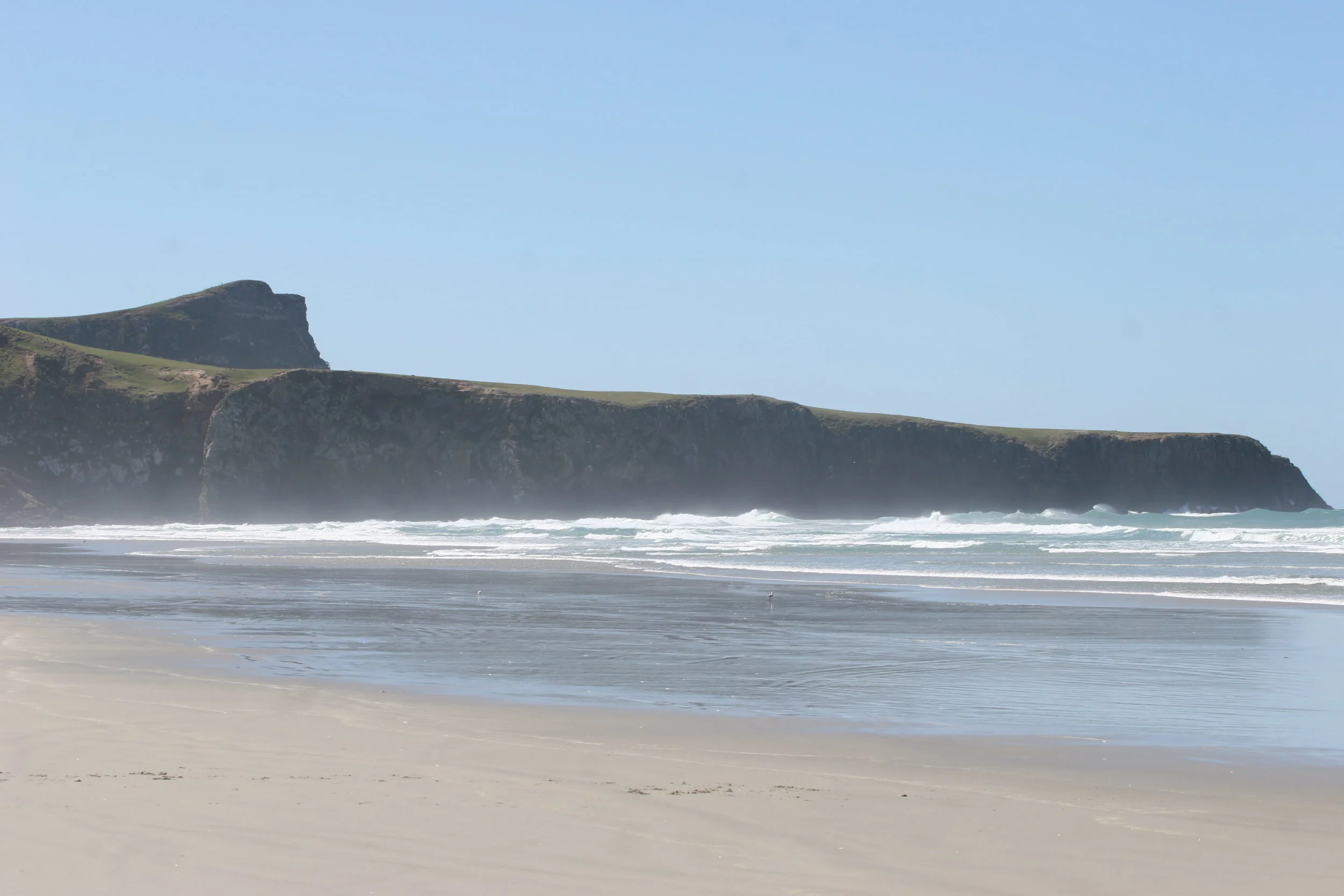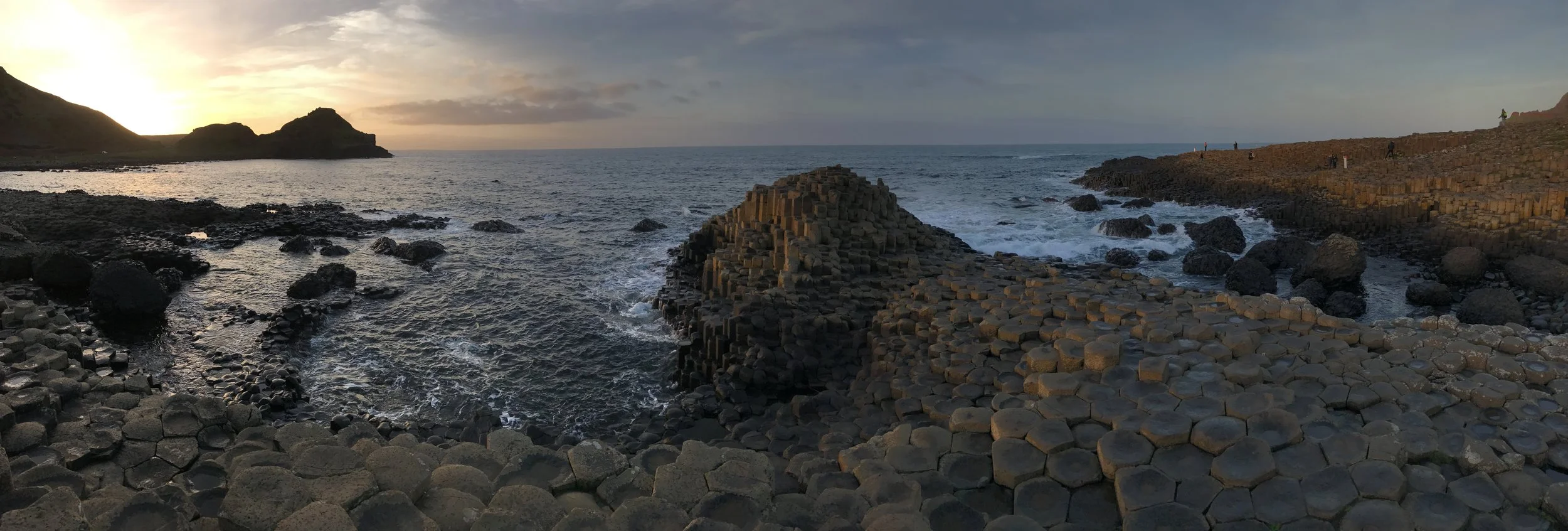While the entirety of New Zealand has a number of pristine beaches, only one beach has a unique off-shore man-made feature and that beach is Victory Beach on the Otago Peninsula. The beach is named for the SS Victory, which, in 1861, ran aground at the end of the beach when under the control of one George Hand (who was later found to be intoxicated at the time of the wreck). While the majority of the wreck was auctioned off during the nineteenth century, and is now absent from the beach, one item remains - one of the huge flywheels of the wreck, which remains affixed about ten feet from the shore, a giant steampunk relic of a long-lost time.
Giant's Causeway
One of the most magical things about Ireland is that no matter where one goes in the country, that area is guaranteed to have a local legend of some sort. From Saints, to Holy Wells, to ghosts, monsters, the Devil himself, sprites, fairies, leprechauns and more, the land is inhabited by magical creatures and secret portals to other magical realms. And, with many places of otherworldly scenery, even if you are a non-believer, it is easy to see how such myths, legends, and stories came about. Out of all of these places, however, there is only one spot where one can visit where two giants battled, or depending on the account, where one giant tricked another, and that is the Giant’s Causeway in Northern Ireland.
Lone Pine Lake
At 14,505 feet, Mount Whitney is the tallest mountain in the continental United States, and one of the most popular spots to hike and climb. In addition to these things, it also has a number of high alpine lakes located nearby (such as the Meysan Lakes), and a number of lakes located along the trail to the summit - such as Mirror, Consultation - and Lone Pine Lake. While Lone Pine Lake is technically not on the trail to the summit, as it is off a short spur trail, it is a great short hike for beginner backpackers and hikers, and for those parties looking to take more than one day to summit Mount Whitney.
Pancake Rocks
From its northern tip to its southern stretches, the South Island of New Zealand has a number of unique geologic features like the Moreaki Boulders. While some of these locations require a bit of commitment to see, other features like the Pancake Rocks on the west coast of New Zealand are easily accessible. Further, as a whole, the west coast of New Zealand’s South Island is an area that, while it is isn't hidden, is wild as a whole. As a start, the west coast is one of the rainiest portions in the entirety of the island, with storms commonly coming off the Tasman Sea. It is also an area that in places, resembles a more tropical locale with pristine beaches, and has many sub-tropical rainforests that are in part, are protected in Paparoa National Park.
Hall of Mosses
While there are three temperate rainforests inside the boundaries of Olympic National Park (Hoh, Quinault, and Queets), the most popular and well-known is the Hoh Rainforest. In addition to its notoriety, the Hoh Rainforest is also the only one of the three to be named a World Heritage Site and a Biosphere Reserve by UNESCO. Before it received this type of recognition, however, the Hoh itself was one of the main reasons for establishing Olympic National Park, as the park itself was created to preserve “the finest example of primeval forest…”. Located on the slopes of the western slopes of the Olympic Mountains, the Hoh is also a spot that receives a great deal of precipitation, averaging over fourteen feet of rain per year. All of this rain has encouraged the growth of tall stands of sitka spruces and western hemlocks, and many other plants throughout the forest. While there are many trails that explore the Hoh Rainforest, the easiest and most accessible introduction to the region is the Hall of Mosses trail.
The Chasm
If one has the time, and the luxury of having a car, or rented a car, driving around the South Island of New Zealand is one of the great adventures in life. Aside from cities and towns, a majority of the island has little traffic, and nothing but sweeping views of far off mountains, expansive coastlines, and almost everything in between. While it is hard to single out one specific drive with the “best” views, any list would surely include the stretch of State Highway 94 from Te Anau to the Milford Sound (otherwise known as the Milford Road). Along this 118 kilometer (73 miles) stretch of road, one has fantastic views of Fiordland National Park, with alpine meadows, snowcapped peaks, waterfalls, old growth forests, and glacial valleys. The only downside to this road is that unlike other stretches of New Zealand highways, it is narrow, and at times, does not have places to pull out and admire the view.
Stonewall Mine
While the gold rush of the nineteenth century in California was largely confined to the northern portion of the state, prospectors also fanned out to all regions of the state, seeking to strike it rich. In San Diego County, most of the mining exploration occurred in and around the town of Julian, but the largest and most productive mine was located a little bit further south, in what is now Cuyamaca Rancho State Park. In 1870, gold was discovered, and after a great deal of legal difficulties, the Stonewall Mine began operating. Over a fifty year period, the Stonewall Mine became the most productive and profitable mining operation in the county, producing over two million dollars of gold.








